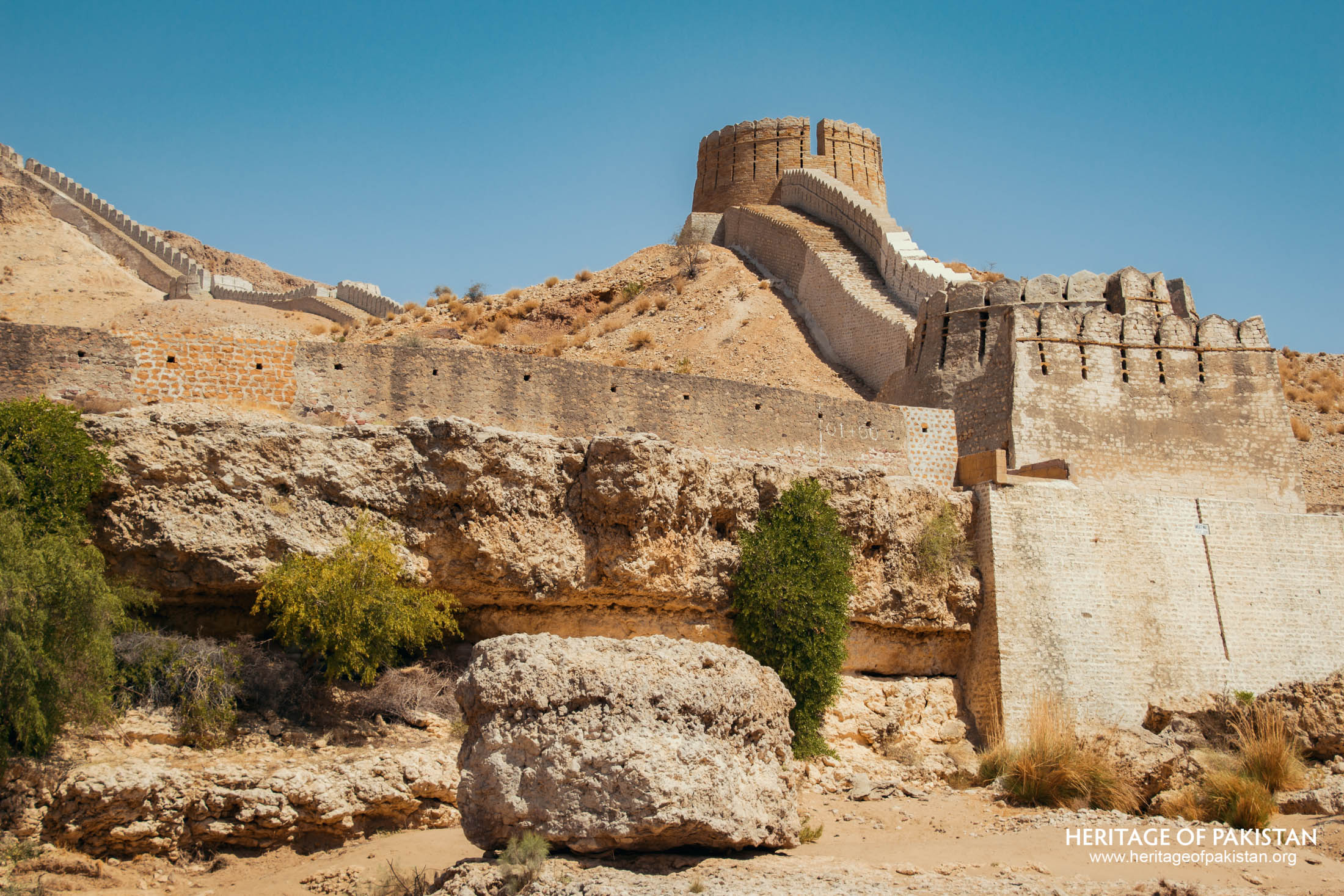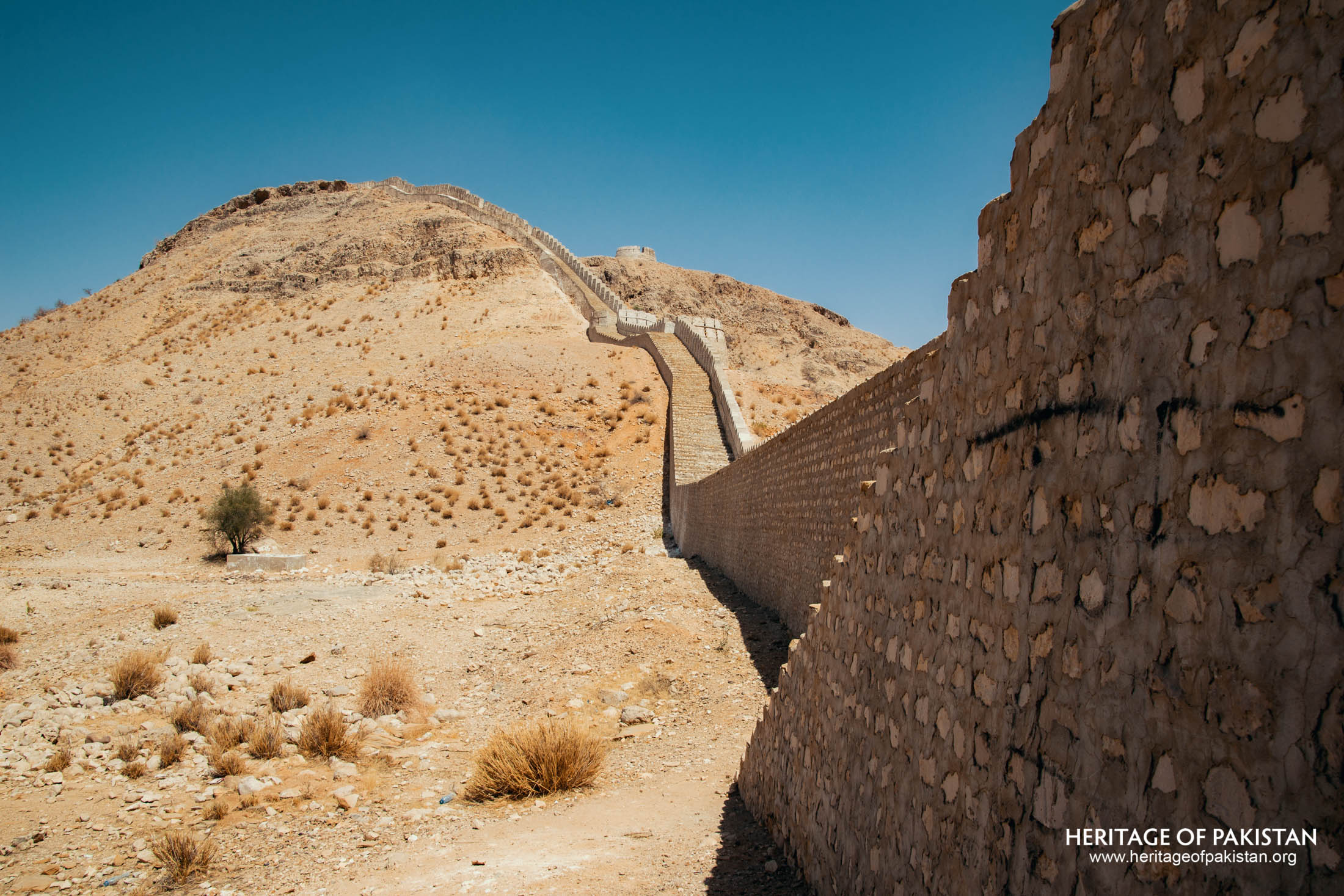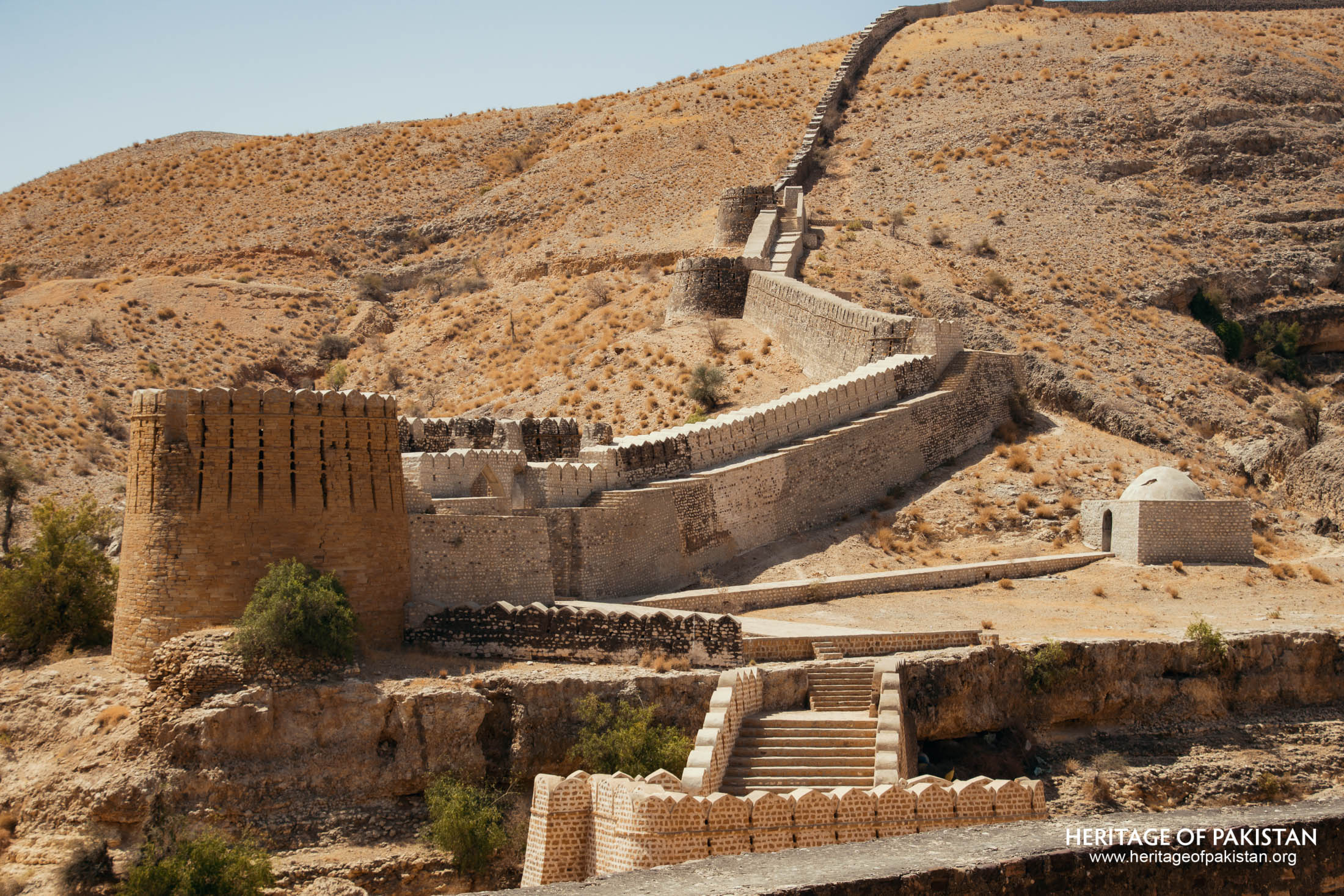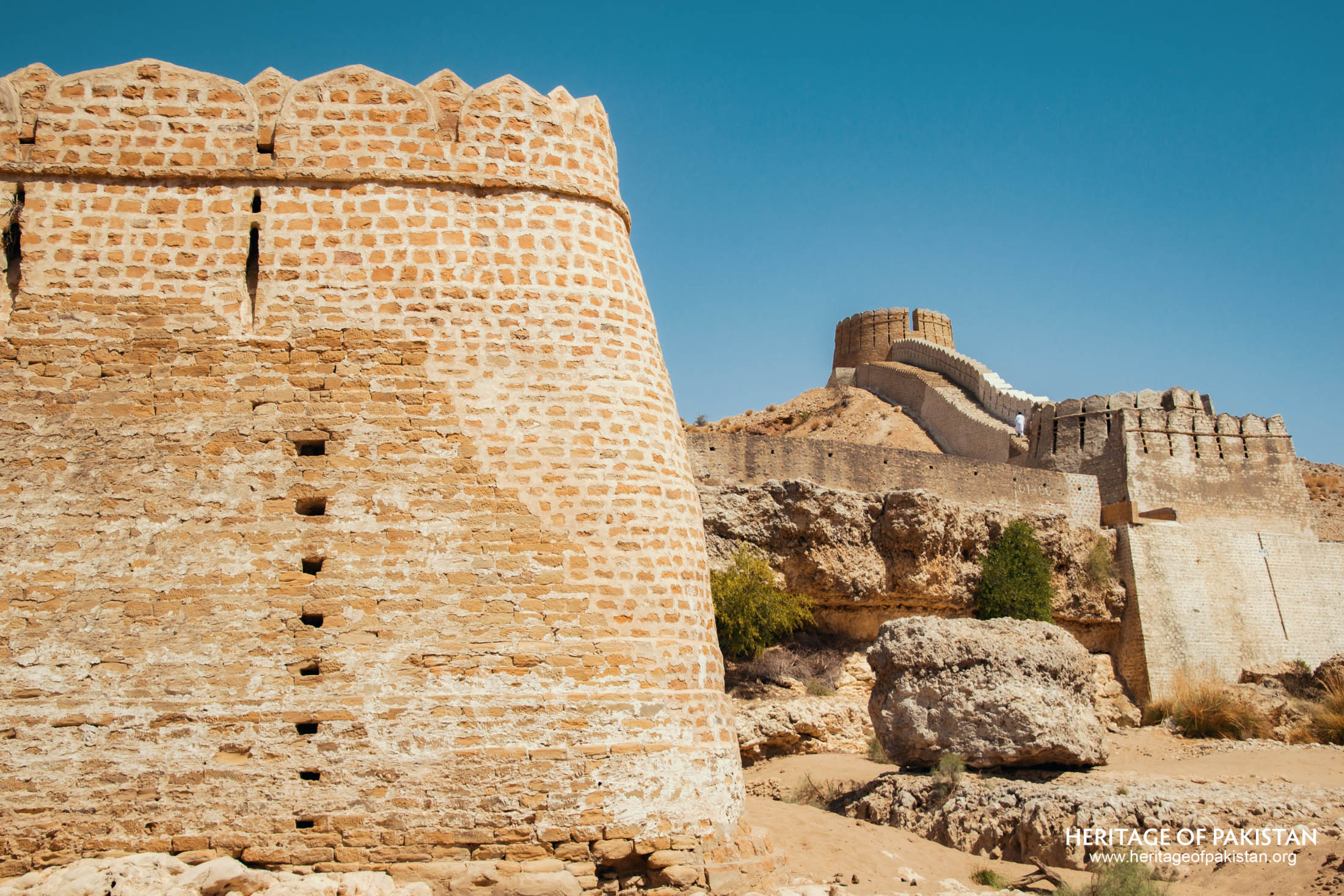Textarea
Ranikot Fort, situated in the Jamshoro District of Sindh, is a prominent historical site often associated with the Talpur era.
Its considerable scale, with a circumference wall stretching approximately 32 kilometers, has led to frequent references to it as the “largest fort in the world.”
It is also colloquially known as the “Great Wall of Sindh.”
The fort lies within the Kirthar mountain range, which marks the boundary between the provinces of Sindh and Balochistan
Within the expansive perimeter of Ranikot, there are three smaller forts—Miri Fort, Shergarh Fort, and Mohan Kot—each contributing to the layered defense system of the complex.
The wall, constructed using yellowish limestone block masonry, exhibits a blend of functional and defensive design, featuring bastions in semi-circular, circular, and rectangular forms.
The average height of this fortification wall reaches about 9 meters.
Notably, only around 25% of the perimeter wall is man-made, while the remaining 75% consists of natural barriers such as ridges, steep cliffs, and rocky escarpments
The origins of Ranikot have been the subject of considerable speculation and debate. Various theories have been put forward.

In recognition of its architectural and historical significance, Ranikot has been placed on the Tentative List of World Heritage Sites.









